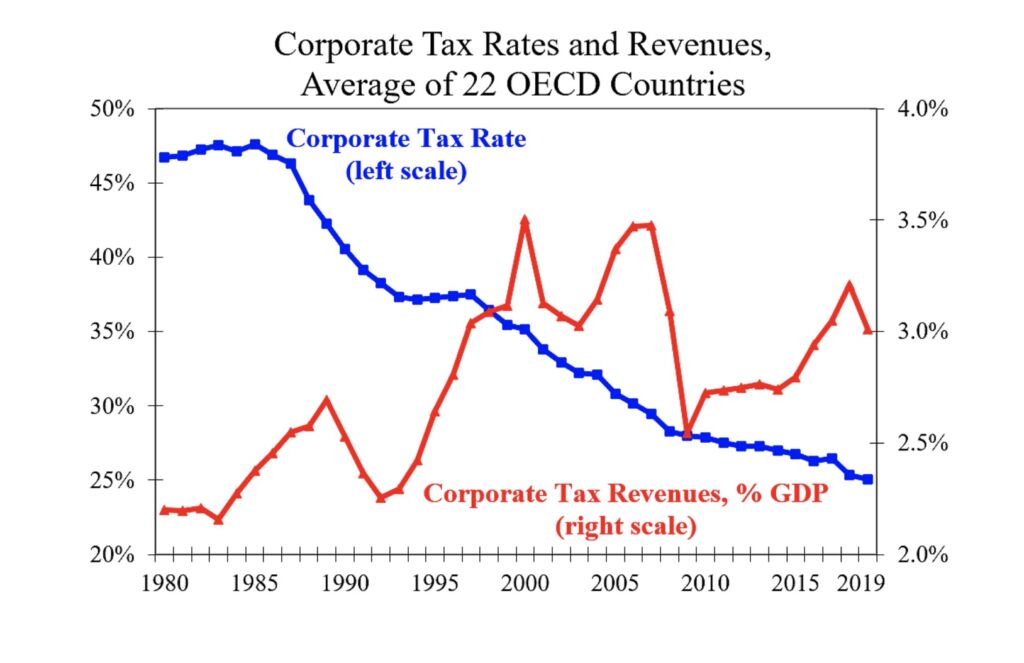High tax rates ≠ high revenues
In our report, “Closing Minnesota`s Budget Deficit“, we highlighted the fact that tax revenues as a proportion of GDP have been constant for Minnesota in times of varying tax rates. This points to the idea that hiking tax rates does not increase revenue as a proportion of GDP. Cutting taxes on the other hand has the potential to grow the economy, leading to increased revenue.
The Cato Institute has published results proving this very phenomenon. By observing 22 countries in the OECD, including the United States, Cato notes that as corporate tax rates have fallen over the years, tax revenues have risen.
Among those 22 countries,
The average rate fell from 47 percent in 1980 to 25 percent in 2019. As a consequence, Yellen or Zucman might think that corporate tax revenues would have fallen. But corporate tax revenues are up substantially since the 1980s. Corporate tax revenues for the 22 countries rose from 2.2 percent in 1980 to 3.0 percent in 2019.
Of course, revenues follow business cycles. Revenues rose during the 1990s boom, fell during the recession in 2009, and then rose again as economies recovered. When economies grow, governments win as tax revenues rise.
The longer-term trend can be seen in decade averages. Corporate tax revenues for the 22 countries averaged 2.4 percent in the 1980s, 2.7 percent in the 1990s, 3.2 percent in the 2000s, and 2.9 percent in the 2010s. Revenues were down a bit in the 2010s from the 2000s, but they were up from the 1980s and 1990s when rates were much higher. The average corporate tax rate was 46.2 percent in the 1980s, 37.5 percent in the 1990s, 31.3 percent in the 2000s, and 26.7 percent in the 2010s.

Lower tax rates incentivize economic activity and therefore expand the tax base. High tax rates do the opposite. Minnesota policy makers need to realize that.